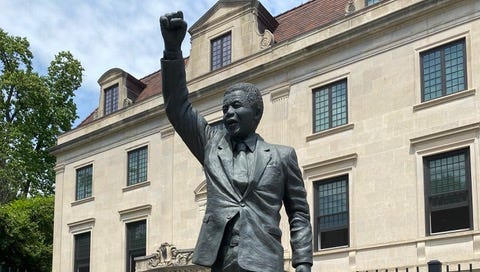Five continents in one day: Part 2
Visiting the Washington DC embassies of Britain, Bolivia, Sri Lanka, Thailand and Ethiopia
There’s a statue of Nelson Mandela outside the South African embassy. Fist raised, he is visible up and down Massachussets Avenue.
Across the road at the British embassy, there’s a statue of Churchill, raising his arm in a victory salute, his index and middle fingers making the V. Some wit on the Internet commented on the unintentional face-off between the statues of Churchill and Mandela. They likened it to a ‘call and response’, one representing colonialism and the other self-rule. ‘Rock always beats scissors,’ they concluded.
Did you know there are more embassies in Washington DC than any other city in the world? Take a guess, how many do you think there are?
Correct! There are 186.
Traditionally, the embassies are invited to open their doors to DC city residents once a year.
COVID got in the way of the Around the World Embassy Tour, but this year it was back with a bang.
The most hype was for the British embassy. This year was the first time it was opening its doors for years, mainly because of a remodelling job.
We stood in a long queue to get in, but it went quickly. Here’s why: chatty embassy staff were dotted along the line, sporting Union Jack waistcoats, bowler hats and sturdy-looking black umbrellas. One chap told us about his shoes (handmade in London). We would have listened to him talk about anything, frankly. We were all just lapping up his plummy accent, as if we’d suddenly been transported to a VIP tent at Henley or Ascot.
Also, we had been promised free tea, a free shortbread biscuit, a look at classic British cars, two tours – one of the on-site Museum and the other of the Edwin Lutyens-designed residence – as well as the opportunity to learn ‘the English game of cricket’ (writer’s won italics).
Here we are having gained entry to the compound, moving swiftly past the court where guests are being taught how to play cricket by the English. We did not reveal we were South African. (Having said that, one of our party may or may not have softly fake-sneezed. The almost inaudible sound that resulted may or may not have sounded like “Ka-llis!”.)
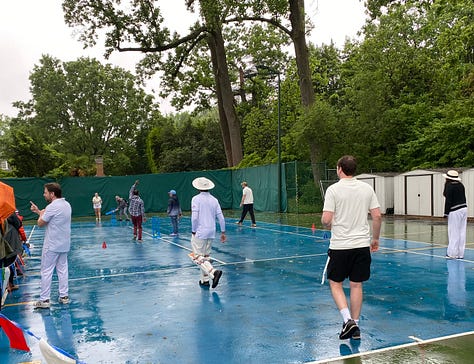

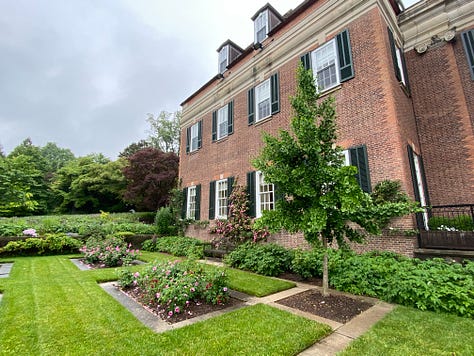
The ambassadors residence is an Edwin Lutyens mansion with extensive grounds. It’s actually quite a big deal, if you’re into this sort of thing.
The British embassy is next-door to the US vice-president’s residence and it was the first embassy to be built in the area that’s now known as Embassy Row.
Prince Charles and Princess Diana stayed here in 1985; The Beatles were mobbed here in 1964 after their first-ever US performance. In 1957, the late queen laid the foundation stone for the seven-storey office block on the property.
The remodelling that’s taken all these years cost a cool $153 million.
The British ambassador’s residence is embellished with marble and decorated with some extremely valuable modern artworks, including an Andy Warhol print of the late queen; a Yinka Shonibare sculpture and a Grayson Perry tapestry.
Lutyens himself was the first architect ever to receive Britain’s Order of Merit. He’s credited with ‘creating much of what typified the style of colonial India, as well as many of the governmental buildings in New Delhi, including the viceroy’s house’, according to Tatler Magazine.
In fact, we heard a fair bit about Lutyens when we lived in Delhi, so I was interested to see this home.
It’s the only Lutyens building in the United States, and its construction was overseen by the developer Harry Wardman, who is jolly famous around here. Wardman built a few thousand row houses in DC’s most desirable neighbourhoods.
The new British ambassador to the USA is a woman named Dame Karen Pierce.
I’m happy for her. A decade ago she was ambassador in Afghanistan. It was nice of her to let us peek into her new pad.
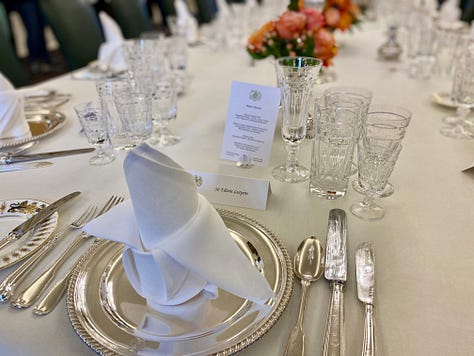
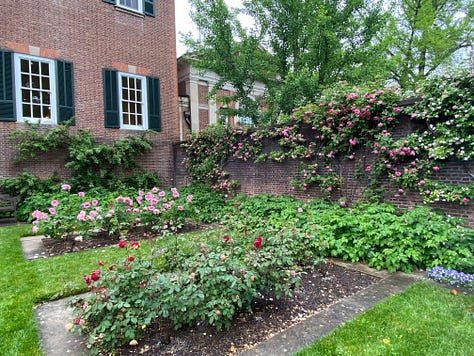

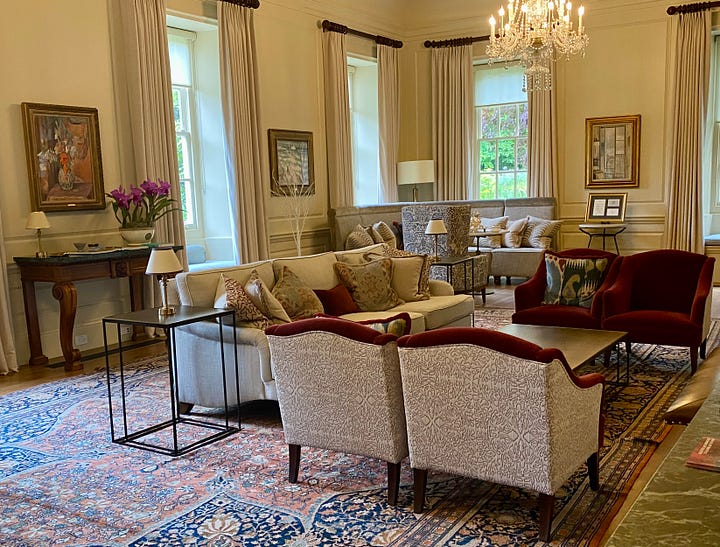
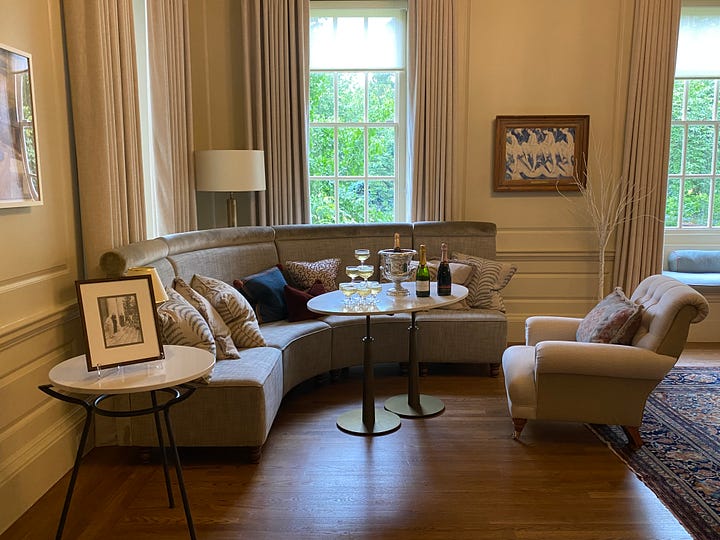
Look at this reception room with the Bloomsbury group paintings. That’s an original Vanessa Bell against the back wall. And bless the ambassador for the scones and pyramid of champers.
In the passage there’s a lovely collection of contemporary art, including photographs and ceramics.
She’s a woman after my own heart.
I could make myself available for tea with her.
Wasn’t that a bit like visiting Downton Abbey? The aesthetic is ‘grand country home’ (according to Tatler Magazine, again). Technically, the façade is ‘Queen Anne’ and the style is ‘Georgian Palladian’.
That may be so. In reality, it feels like someone lives there.
The brickwork, the shuttered windows and the blockiness of the design speak to the history of English domestic building design, and I loved that.
There’s a kitchen garden behind the house that makes perfect sense: raised beds of vegetables and herbs divided by angled pathways. There’s a sense of an Austen-era English country garden here. It’s in the green arches and in the climbing roses.
I found the addition of the pediment and portico a bit clumsy, but powerful states love a bit of imposing Neo-Classical grandeur. I can imagine someone insisting on it.
Lutyens designed the residence and gardens in 1928. The work was completed in 1931.
The dining table was set “for fun”, according to staff. In the fantasy table setting, Lutyens is seated at the head of the table, with Rosa Parks and Harriet Tubman to his left and right.
I’ve no idea what Lutyens was like as a person. He certainly could design a grand building. Who knows whether he’d derive more pleasure from chatting to Parks and Tubman, or having the honour of sitting at the head.
What do you reckon?
Speak soon.
X Daisy

